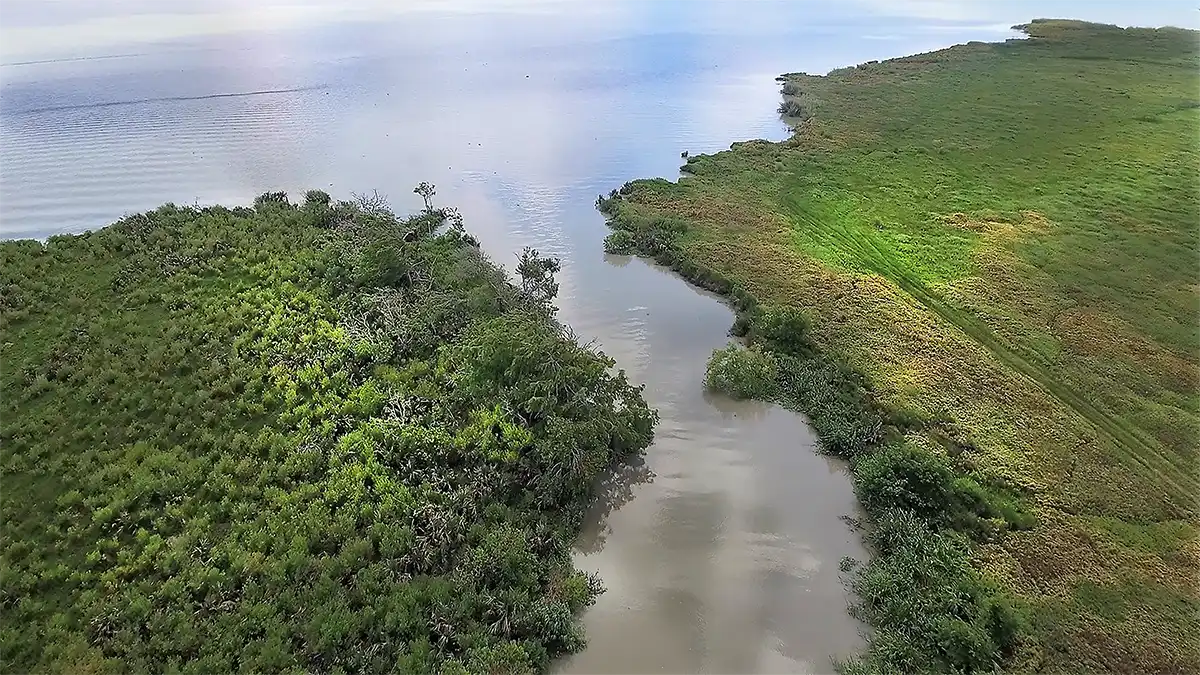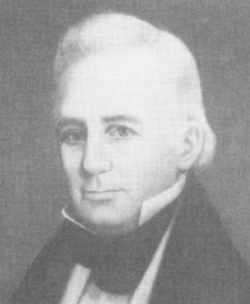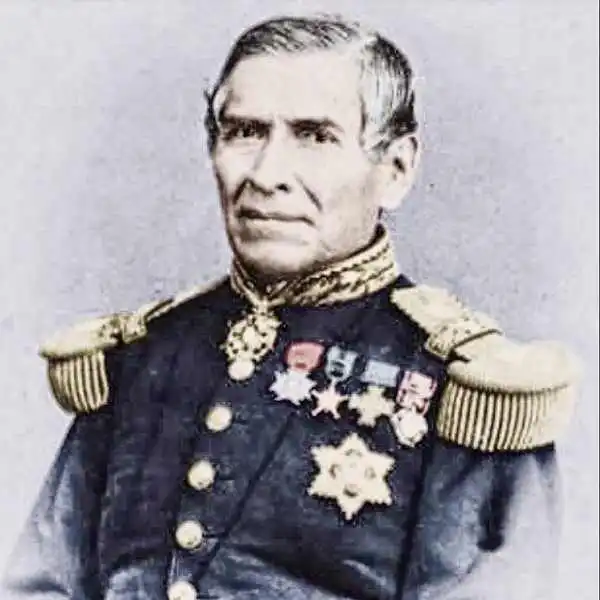
The deductive process by which Mesquite Landing got its name might be left to the reader. Perhaps it was a corruption of mosquitos that became mesquite to the ear. That seems more likely, given the record of these pesky insects here! Early Anglo-Texans varied the spelling: mesquit, mezquit, musket, musquit.
In various Spanish reports, the landing and/or settlement is referred to as El Sabinito or El Sabino. An old Spanish journal tells of a “great weeping tree” which is referred to as El Sabino. Perhaps they were describing the great Live Oak trees whose branches “weep” with Spanish moss. That could certainly have described the area of La Muelle Viejo, then and now. Alternately, it could be that sabino referred to the Montezuma baldcypress, as this area of Texas is home to forests of cypress trees along the banks of its rivers and creeks.
From the Coast up to Mesquite Landing
San Antonio Bay is protected from the Gulf of Mexico by Matagorda Island. Boats and small ships would find access to the coast through Pass Cavallo, northeast of the bay, and sometimes through Cedar Bayou. Waters tended to be shallow and reefs prevalent, so early explorers often fell prey to the elements in their journeys.
The San Antonio Bay delta is an intricate sculpture of fresh and salt water marshes, thickly wooded river banks, and flat grassy plains dotted with live oak motts.
“The region’s landings and ports of El Sabinito, El Muelle Viejo, El Bergantino and El Copano were Spain’s and Mexico’s Gulf gateways to Texas.”

In the early 1800s, there were rumors of the Catholic Church’s secularization of mission lands in Texas, and this created a scramble for possession of those properties. Prospective grantees selected areas they wanted and established haciendas thereon. Padre Jose Antonio Valdez, a soldier and priest, chose the land in the fork of the San Antonio and Guadalupe Rivers at the confluence; about 1824, he was granted several leagues in that area by his brother, Raphael Gonzales, Governor of Coahuila. Captain Manual Hernandez established a rancho at the confluence on the West side of the San Antonio River. The area was becoming well settled.
In 1817, Captain Juan de Casteñada, Spanish commandant at la Bahia, set up a post at Los Mosquitos. “Cattle and horses, corn and cotton, wooden wharves and tabby foundations, crude trails and rutted traces, wood smoke and human sweat, conflicts and cholera — all began to appear,” according to a book preview of Matagorda Island: A Naturalist’s Guide. Barks, sloops and schooners were bringing people and goods through Pass Cavallo and on to various docks, including Mesquite Landing.

The Long Expedition
On October 3, 1821, General James Long, leader of the filibusters who wanted to take control of Spanish Texas, came with a fleet consisting of a schooner, two sloops and 52 men. They entered Matagorda Bay, passed through what is now known as McHenry’s Bayou into the Bay of Espiritu Santo, and proceeded to El Sabino.
It was noted that they left their boats in charge of a member of the expedition identified only as Black; Black was killed a few days later by Spanish scouts. Their purpose was to capture La Bahia and then march on San Antonio. The mission failed, but the embarkation from Mesquite Landing was another footnote to the colorful history of this wharf and settlement.
The Empresarios
Starting in 1821, empresarios were granted land by the new Republic of Mexico to establish colonies in Coahuila y Texas. James Power and James Hewetson’s empresario contract ultimately extended from the Guadalupe to the Nueces Rivers, and they received control of the former lands of the abandoned Nuestra Señora del Refugio Mission. They would be responsible for colonizing the land at the confluence and Mesquite Landing.
Through Stephen F. Austin‘s association with Judge Joseph H. Hawkins, a New Orleans attorney and former Kentucky congressman, Austin authorized the Judge’s brother, Littleberry Hawkins, to conduct an exploration of the Mexico coast. Littleberry spent four months examining the mouths of the Brazos, Colorado, Guadalupe and San Antonio rivers during 1822 and 1823.
He stated (in a letter to Austin on October 7, 1824), “I was the first person that took a vessel to the landing of Guadalupe and the Bay of Musquittoes the mouth of the San Antonio River before I landed in the province.“

One set of Irish colonists, sailing on the Albion and the brig New Packet from New York, was bound for the McMullen and McGloin settlements on the Nueces River. Somehow separating from the New Packet (who sailed into Copano Bay), the Albion landed at Matagorda Island in 1829. According to Martin O’Toole, his family landed on St. Joseph’s Island in July, then [traveled] up to Mesquite Landing, and after stopping at Nicholas Fagan‘s for several days, went to the Refugio Mission.
Los Piratas
Smugglers and pirates were active in the waters of the Gulf of Mexico in the early 1800s, so one can imagine that their ships sailed up the Guadalupe to unload or receive cargo at Mesquite Landing. Imaginative and colorful stories, or pirate lore, abound. A recent discovery of a box of old records in the Principal Archives of Mexico is described thus: 1830. Legajo 17 (file 17) Report of pirate vessels at Lost Mosquetes and El Sabanito. (Find out more)

Almonte’s Exploration
In 1834, Juan Nepumoceno Almonte, a Mexican official, soldier and diplomat, was assigned to make an inspection tour of Texas and write a report. The Spanish wanted all provisioning of and trade with Texas to be overland so customs and duties might be collected, profiting the Spanish government. Almonte notes in his report that ships are searching for ports where these duties can be avoided — and that smugglers are using Mesquite Landing (which he calls El Sabinito) for such a purpose.
It is from Almonte’s journal that we get the most colorful description of early Mesquite Landing and the settlement at the confluence. He notes that ships with a draught of not more than six feet can arrive safely at Sabinito — and ominously writes that “many crocodiles are found in these rivers”.
A footnote in Almonte’s report states: “At the crossing of all Texas rivers there are today flat-ended boats to take travelers across in times of high water, and the price charged for one person varies from one real to two pesos, according to the extent of the flood. All the rivers in Texas are fordable in the summer, and very rarely is there enough water to require the use of a boat to cross them.” (Well, except for the crocodiles!)
Go to: Colonization & Revolution
